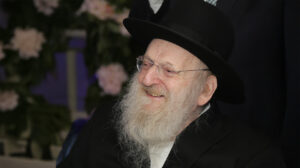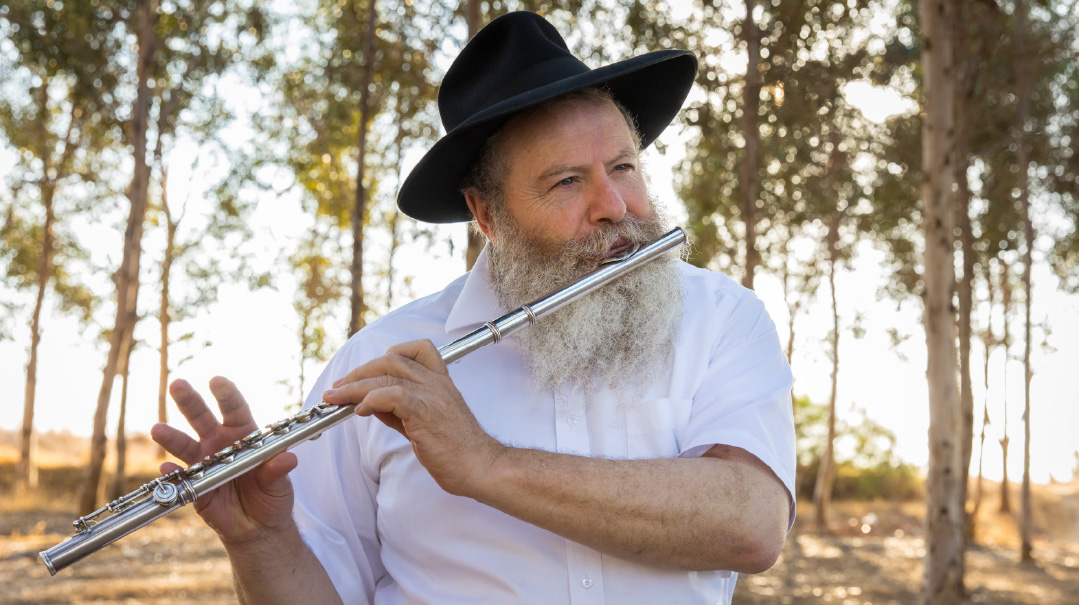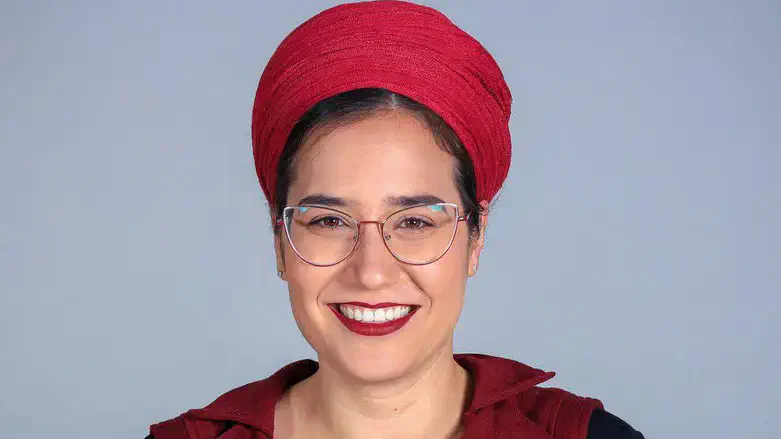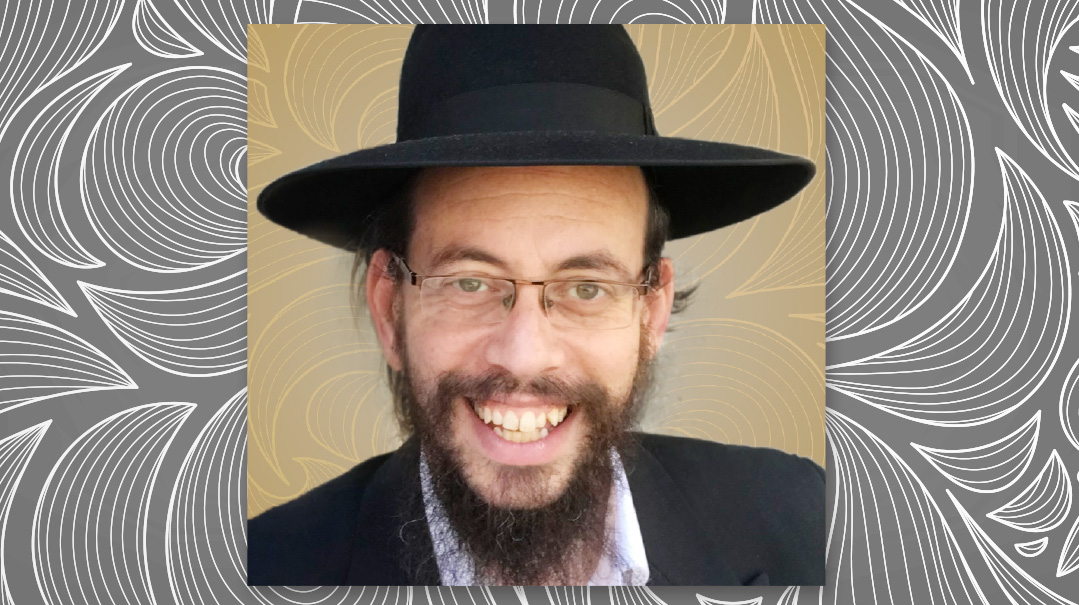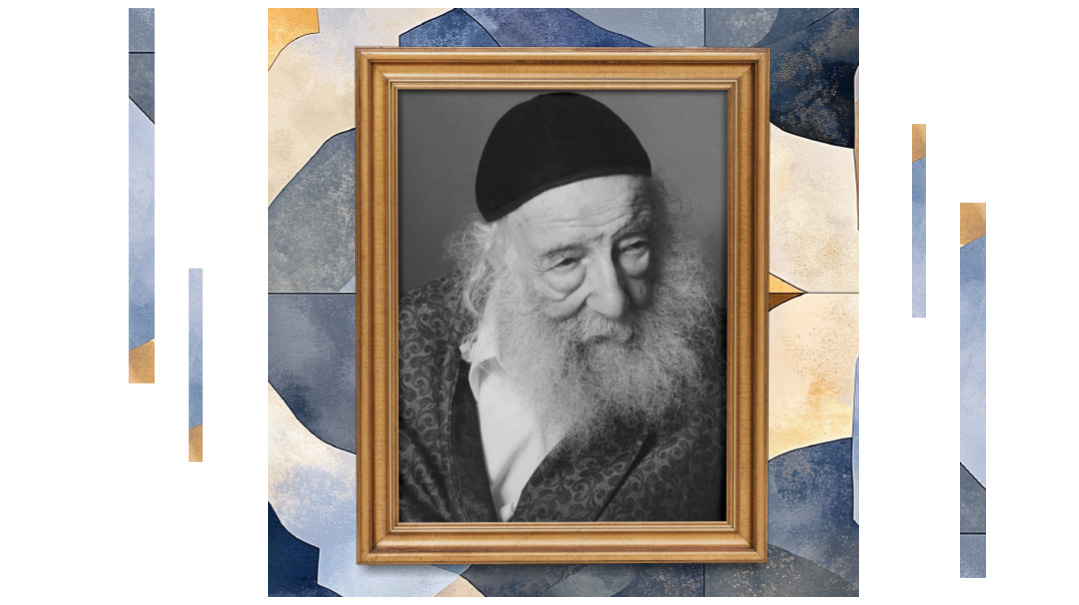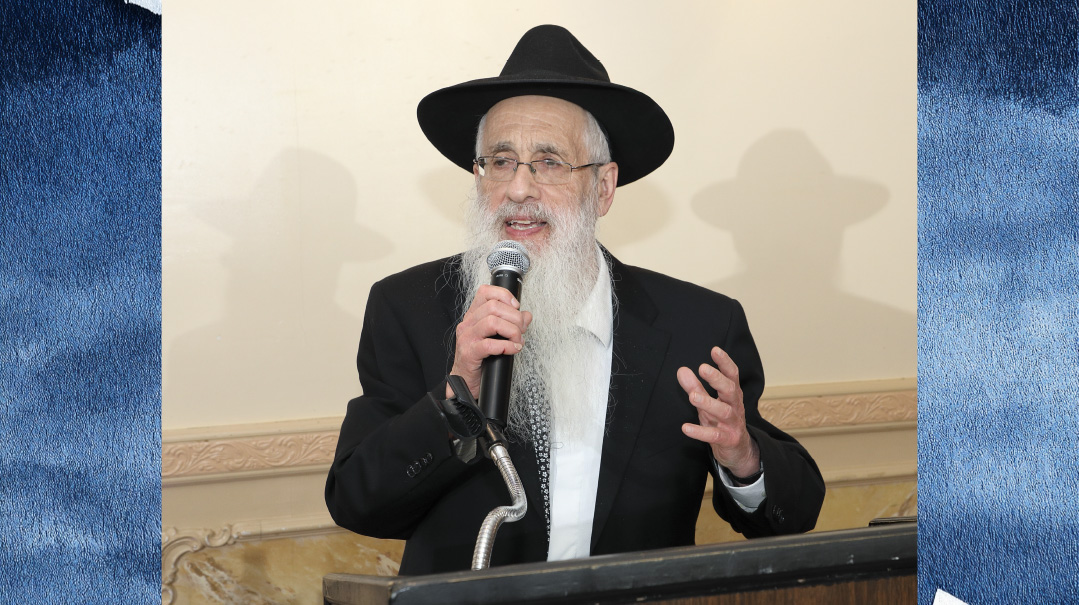Royal Patriarch


R
av Halpern — who was known as “Reb Chuna” — was born on Chanukah of 1922, in the town of Kosice (Kashau), Czechoslovakia. His father Rav Dovid was the av beis din of Dovshitz (Galicia) and a descendant of the great chassidic giants of Sanz, Brezhan, Ropshitz, Zlotchov, and Premishlan. Rav Halpern’s mother, Rebbetzin Mindel, was the daughter of the venerated Rav Shmuel Engel of Radomishle, the author of Sh’eilos U’Tshuvos Maharash.
Until he was 14, young Elchanan Halpern learned with his holy grandfather, Rav Shmuel Engel, who lost his eyesight at the end of his life. Another great tzaddik who lived in Kashau at the time and attracted the young illui was Rav Avraham Shalom Halberstam of Stropkov. With the rumblings of World War II in the air, Rav Elchanan fled Europe, escaping to London. When he went to take his leave of his rebbe, the Stropkover Rebbe wished him success in everything he would do — and that was a brachah that accompanied him throughout his life. His grandchildren relate that whenever he asked them to do something and they were unsuccessful, he would attribute the lack of success to a lack of effort. “The Rebbe blessed me with success in everything I would do, and his brachos were always fulfilled,” he would explain. “If success has not come, it means that the requisite actions have not been taken to bring it about.”
When he moved to London, Rav Chuna became close with Rav Shalom Moskowitz of Shotz — who was also a relative — becoming his talmid muvhak. In addition to being Rav Elchanan’s rebbe, Rav Shalom also became his shadchan. Rav Chuna married a daughter of Rav Nachum Lidzerovsky, an Aleksander chassid and descendant of both the Baal Shem Tov and the Noda B’Yehudah.
A Revolution
Soon after his wedding, at age 20, Rav Elchanan Halpern began his tenure as rav of the Beis Shmuel kehillah, which he founded in Golders Green. For the next 73 years, he never missed a Shabbos Shuvah or Shabbos Hagadol derashah. Today, the beis medrash is counted among the oldest and most significant shuls in the neighborhood, but seven decades ago, Rav Elchanan began a veritable revolution, encouraging community members — many only marginally committed to a religious lifestyle — to send their children to chareidi yeshivos rather than academic institutions. And as the boys of the community filled themselves with Shas and poskim in the yeshivos of Lucerne and Gateshead, they returned home with renewed commitment — coaxing their parents to make their homes spiritually stronger.
In his beis medrash, Rav Elchanan Halpern delivered shiurim in Gemara, halachah, mussar, and chassidus. Throughout the years though, he firmly upheld the rule that no shiur was to be delivered in the main beis medrash in English. Since that was the only language some of the congregants spoke, Rav Elchanan designated a side room for shiurim in English to be delivered by various rabbanim and darshanim. He also appointed marshals to enforce the rule against speaking in the beis medrash during davening. But rather than his congregants — many of whom were Holocaust survivors — bolting at these measures, they flocked to him.
Many Jews attribute the ahavas haTorah they feel today to the influence of Rav Elchanan Halpern, who worked to infuse them with that great love.
Rav Elchanan, realizing the secret of Jewish survival lies with the youth, put tremendous effort into the younger generation. The Pardes school, which he founded and named for his rebbi, Rav Yissachar Pardes, has been operating for decades under Rav Elchanan’s aegis, and benefited from a regular visit from Rav Elchanan every Erev Shabbos. Each week, the rav would come to the talmud Torah and make his way from class to class, testing the children on their learning and sharing words of mussar and stories about tzaddikim. In fact, he’d never forgo this weekly visit. His grandchildren relate that Rav Elchanan was once out of the area on a Friday morning, and by the time he returned, the students in the talmud Torah were waiting at the gates for their buses and car pools. Nevertheless, Rav Elchanan spoke to the boys, testing them on their learning and sharing inspiring thoughts as usual. One of the children, surprised by his insistence on maintaining the routine, asked, “What would happen if the rav didn’t come for one week?”
Rav Elchanan replied, “I want you to know how vital these visits are for me. I even wrote in my tzavaah that they should write on my tombstone how I used to visit the talmud Torah every week.” That tzavaah was written 33 years ago, when he was 60.
Rav Halpern maintained a special friendship with Rav Itzikel of Pshevorsk, who moved to Belgium in 1957, bringing with him the fire of prewar chassidus. Many people came to Rav Itzikel’s beis medrash in Antwerp every Motzaei Shabbos in order to receive a few cloves of garlic, which he would distribute as a segulah for parnassah. Rav Itzikel made Rav Elchanan his “partner” in the distribution, so that the Jews of London wouldn’t have to travel to Belgium. If a British Jew did come to Rav Itzikel, he would tell them, “You don’t need to come here. You already have Rav Chuna.”
And so, many people stood in line for hours on Motzaei Shabbos to receive those precious cloves of garlic from Rav Elchanan. That wasn’t the only segulah he passed around. He also practiced the Sanzer custom of throwing apples at the congregation on Simchas Torah, as a harbinger of success and salvation.
Rav Halpern also maintained close ties with many other great chassidic leaders, including the Shefa Chaim of Sanz, the Divrei Yoel of Satmar, and the later rebbes of Pshevorsk. After Rav Itzikel’s passing, Rav Halpern attended his levayah and was the shaliach who appointed his son-in-law and successor, Rav Yaakov Leiser (“Rav Yankele”). It was Rav Halpern who also coronated Rav Yankele’s son, Rav Leibush shlita, after Rav Yankele’s passing.
Simchahs All Week
Rav Halpern was blessed with five sons and four sons-in-law who are among the most distinguished admorim and rabbanim in the chassidic world today: his sons Rav Yitzchok Aryeh Leibish Halpern, rav of Ramot Gimmel; Rav Yisroel Shmuel Dovid Nachum Halpern, rav in Hendon; Rav Chaim Aharon Tzvi Halpern; Rav Shalom Yosef Halpern, rav in New York; Rav Moshe Yehuda Ber Halpern, rav of Beis Shmuel in London; and sons-in-law the Nadvorna Rebbe of Haifa, the Makova Rebbe, the Chernobyler Rebbe, and Rav Yosef Moshe Schneerson, rosh yeshivah of Tchebin. There are close to 1,500 children, grandchildren, great-grandchildren, and great-great-grandchildren. “If he would have attended all the simchahs of his offspring, he’d never be able to take off his shtreimel,” said a grandchild.
Rav Halpern’s grandchildren married into the families of the Belzer Rebbe, the Vizhnitzer Rebbe, the Sanzer Rebbe, the Rachmistrivka Rebbe of America, the Vizhnitzer Rebbe of Monsey, and the Rebbes of Erlau, Biala, Lelov, Bohosh, Zvehill, Shomrei Emunim, Toldos Aharon, Spinka, Amshinov, and Dzhikov. All of these admorim have already married off children and grandchildren of their own. In fact, Rav Elchanan was dubbed “the mesader kiddushin of the generation,” since he was the great-grandfather or great-great-grandfather at almost every wedding arranged between two prominent families, and as such, he was given the honor of siddur kiddushin.
In Rav Halpern’s possession were a number of sacred objects, the most precious of which was a becher that had belonged to his revered ancestor, Rav Meir of Premishlan, who had inherited it from his own forebears. Rav Halpern took this becher with him on his travels, and he used it to honor the distinguished rabbanim whom he visited and who visited his home. And he used this becher at every chuppah of one of his descendants.
He was also known for his sublime conduct at the mitzvah tantz at the weddings of each of his progeny. Instead of holding the end of a gartel, he would perform seven circuits while tilting his head upward with his eyes closed. Many would watch, trying to closely observe his avodah at these holy moments.
Every Shabbos after the aliyah of shishi, Rav Halpern would recite a mi shebeirach for every one of his descendants who had celebrated a simchah that week — a bris, a kiddush, a bar mitzvah, or a wedding. The gabbai knew he had to be prepared with an updated list every week. Gifts were also sent on a weekly basis — Rav Halpern made sure to send a gift for every simchah held by one of his offspring.
Rav Halpern knew his grandchildren very well, but the proliferation of younger descendants made identifying all of them difficult. He has more than ten descendants named “Aharon Twersky,” and a dozen with the name “Dovid Halpern.” Whenever a great-grandchild or a great-great-grandchild greeted or contacted him, Rav Halpern would ask him to identify himself by the names of his parents or grandparents.
Once every few years, when he visited Eretz Yisrael, Rav Haplern would arrange a joint Shabbos for all of his progeny, each time in a different city. He also learned with some of his descendants on a daily basis, especially since his eyesight was failing in his later years. In London, he learned with his local grandchildren, and when he visited Eretz Yisrael, he learned with his descendants there. Since his visits were too short to accommodate all of his offspring in Eretz Yisrael, they would arrange a rotation or draw lots to determine who would learn with him.
Before each new year, every one of Rav Halpern’s descendants would either write a letter or place a telephone call to their illustrious forebear, in order to wish him a good year and to receive his blessing in return. This process began at the beginning of Elul and continued until Rosh Hashanah. Before the most recent new year, Rav Halpern made a special effort to give each of his callers special time. Perhaps he was somehow aware that he was taking leave of them for good, that this would be his final blessing until Mashiach.
The Vision
Before he was hospitalized recently, Rav Elchanan’s eyesight became particularly weak. Nevertheless, he refused to stop delivering his shiurim, and he took advantage of every available window in his day to learn with his chavrusas. Those chavrusas were amazed by the depth and breadth of his knowledge, which was only revealed in full once he was no longer able to read.
This past Shabbos Chanukah, as usual, Rav Halpern led the recitation of the brachah for the new month, in advance of Rosh Chodesh Teves. “Rosh Chodesh Shevat yihyeh,” he began, his voice sounding somewhat weak, and the congregation attempted to correct him. “Teves!” they called, but Rav Elchanan seemed not to hear them. He refused to be corrected.
Indeed, on Rosh Chodesh Shevat he fell ill. On the first Shabbos of his hospitalization, his daughter, Rebbetzin Schneerson, sat at his side. Rav Halpern turned to her and asked, “Who are those two people here in the room?” The rebbetzin was surprised, for there was no one else present. Rav Halpern described the “visitors” he saw: “One is an older Jew with a white beard, and the other has a black beard.” The rebbetzin understood that her father was experiencing a sublime vision. Perhaps those were his escorts, but the time was not yet ready. A month later, on Erev Rosh Chodesh Adar, his heart suddenly stopped, as those otherworldly attendants came back to guide him to the Next World.
Yehi zichro baruch.
(Originally featured in Mishpacha Issue 549)
Oops! We could not locate your form.

